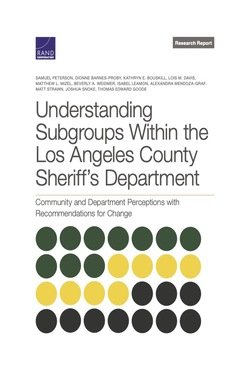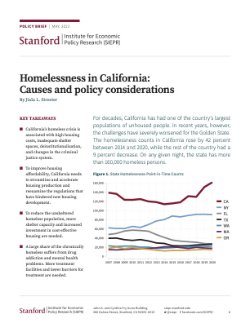By Samuel Peterson, Dionne Barnes-Proby, Kathryn E. Bouskill, Lois M. Davis, Matthew L. Mizel, Beverly A. Weidmer, Isabel Leamon, Alexandra Mendoza-Graf, Matt Strawn, Joshua Snoke, et al.
RAND Corporation researchers studied deputy subgroups within the Los Angeles County Sheriff's Department (LASD) to help LASD and the county learn more about how these subgroups are formed, why they exist, and what actions might be taken if it is determined that these subgroups have a significant impact on LASD's mission. The research team formulated questions for an anonymous survey, confidential interviews, and focus groups with a range of LASD personnel and community stakeholders. The team collected interview and focus group data from 141 community leaders and members; interview data from 57 individuals, including members of LASD and other county stakeholders; and responses from 1,608 LASD survey participants. Sixteen percent of LASD survey respondents acknowledged that they had been asked to join a subgroup, with one-quarter of those being invited in the last five years (the survey did not directly ask whether participants belonged to a subgroup). Personnel had a wide array of views on the structure, function, risks, and value of the subgroups, but many recognized that the potential risks outweighed any functional value or other purported benefits. This matter negatively impacts community trust, and community members wanted to see that LASD was taking the matter seriously. Deputies expressed mixed opinions as to what actions they felt the department should take. Thirty-seven percent of respondents agreed that subgroups should be prohibited. These results suggest that this subject is divisive within LASD and that efforts for such
-
change could be met with some resistance.
Santa Monica, CA: RAND, 2021. 230p.





















